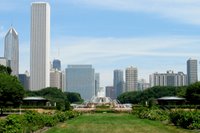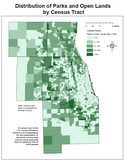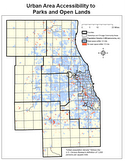Parks and Open Lands Strategy Paper
Preservation of Parks and Open Space Summary

Parks and open spaces are most commonly appreciated for their aesthetic and recreational qualities. However, well-planned parks – whether focused on leisure, nature conservation, or both – provide a number of benefits from the economic to the environmental to the social. Inevitably as the region grows, development will continue to encroach on our pristine natural areas and our urban centers will see greater densities – a pair of conditions that make dedicated park planning and conservation efforts more critical than ever. If parks and natural areas are an important part of your community, please review the following CMAP strategy report, which outlines the impacts of well-planned parks and open lands, and contextualizes them to the Chicago region. Comments and criticism are encouraged.
A sample of findings:
Primary Environmental Benefits
- Parks and open lands will improve air quality by removing pollutants from the air.
- Parks and open lands reduce stormwater runoff by reducing imperviousness.
- Parks and open lands improve biodiversity, as measured through habitat connectivity.
Primary Public Health Benefits
- Preserving parks and open space reduces the risk of health-related diseases such as obesity and heart disease
- Preserving parks and open space can improve mental health.
|
Links
Maps    |